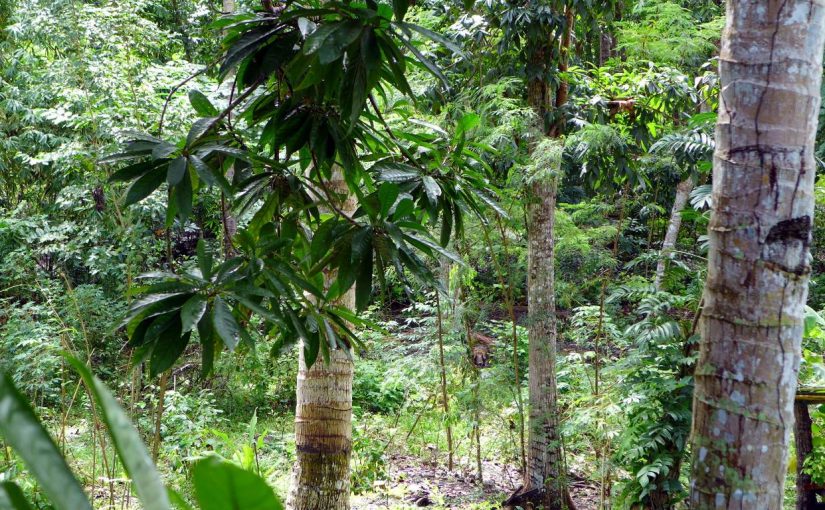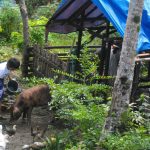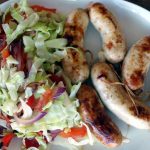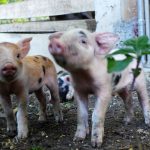Back in 2015, we had a stroll around to visit some of our neighbour’s backyard piggeries.
Backyard Pigs in San Roque
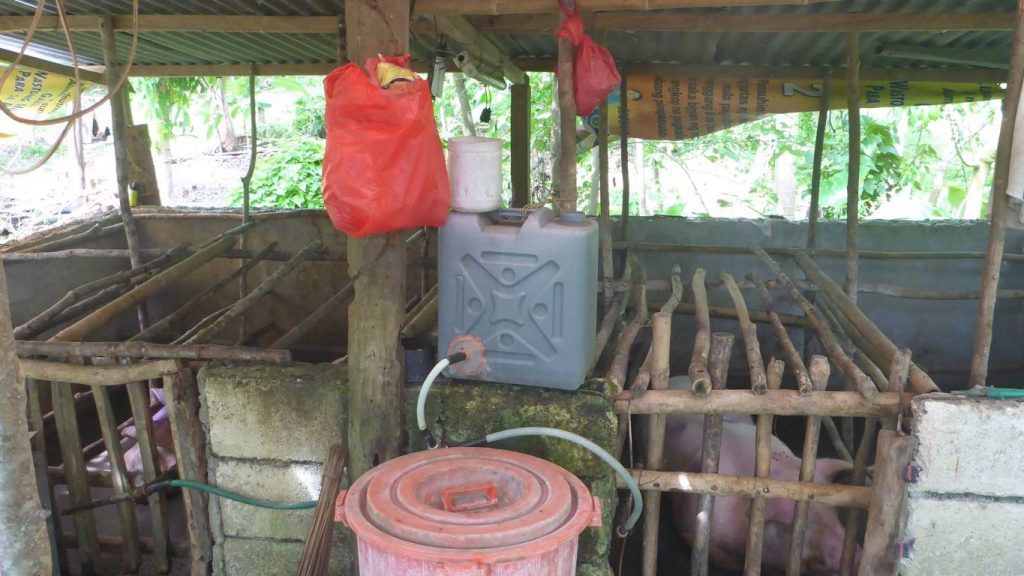
Above and below are two photos of Amboy’s backyard piggery. He has two sows. One sow farrowed the other night and have 12 piglets. He works with a technician from Breeders in Tagbilaran City who administered the Artificial Insemination. They do not not give antibiotics after farrowing unless absolutely necessary. Breeders helps with piglet processing – teeth clipping, tail cutting, castration and iron injections. Amboy has one gestating pen and one farrowing pen. He has an improvised farrowing crate that he built himself. The wooden structure prevent the piglets from being crushed by the sow but Amboy and his mom still need to keep an eye on them for the first couple of days. Since the pens are very near their house (about 5 meters), they are able to constantly monitor the sow and piglets. Because the improvised farrowing crate is put together with screws, it can be dismantled so that the concrete stall can be used as a fattening pen.
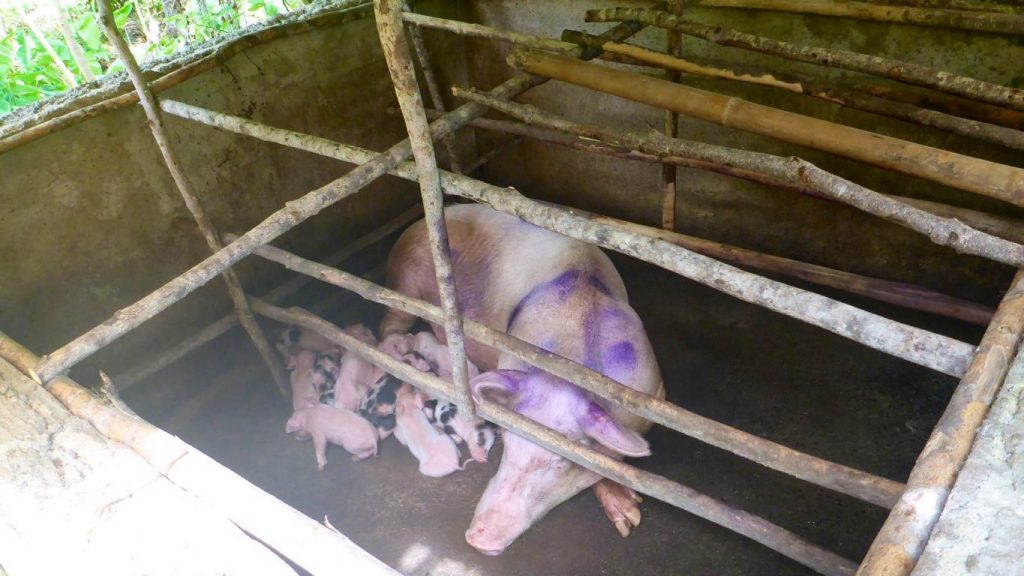
I asked Amboy about hernia cases since we had one case of hernia the first time we started pig breeding. Amboy said he has had hernia cases in a previous litter with another sow. All of the 8 piglets had hernia, indicating it may be hereditary. Five piglets outgrew the hernia while the other 3 didn’t. He said he just had to control their food and water intake to prevent a rupture. All the piglets were for fattening.
We bought five of the piglets shown in the photo. We selected all the spotty ones. Three of the spotty ones became our sows (we currently keep two sows). One was a castrated boar which we sold to someone in Laya when it got bigger. The other was a female piglet with umbilical hernia which we fattened for meat.

The above photo is of Jun-Jun’s backyard piggery just about 25 meters away from Amboy. He has two concrete pens with five fattening pigs. The piglets are purchased from a breeder in Corella and other places. These will be sold for fiesta in August.
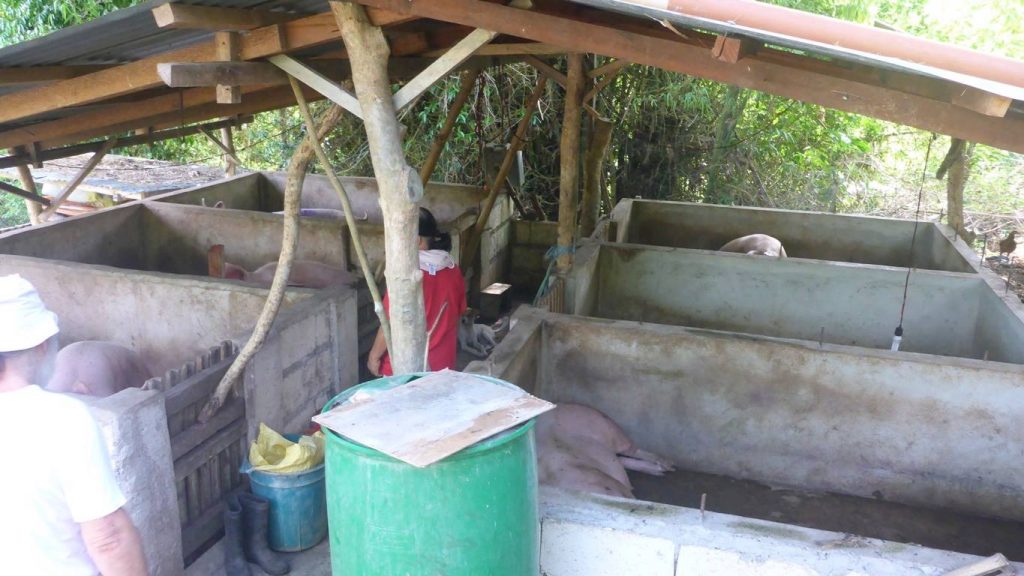
The photo above is from Gunding who has over ten years experience pig breeding. She has never experienced a case of hernia. She has six concrete stalls. One stall is empty – this is where she puts piglets in. She used to use artificial insemination from outside but now she has purchased one young boar to service four sows. She had a sow with 12 piglets – two died by crushing, ten survived. Five have already been bought and five remain here, kept in a separate pen with concrete floor and a wood and bamboo fence (photo below). She fattens pigs and butchers them to sell to people in the village.
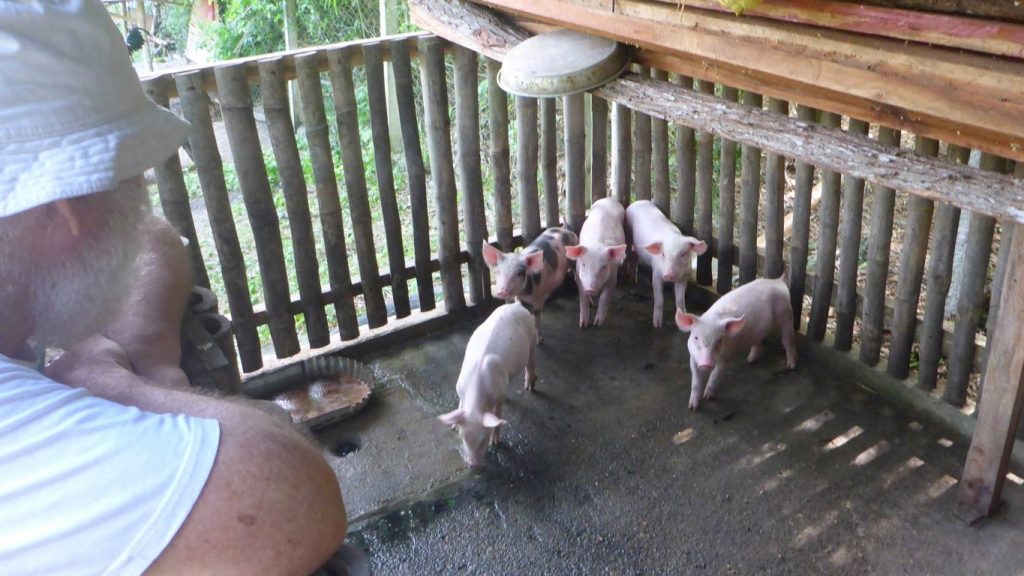
Gunding does not use farrowing crates. When a sow farrows, she and her helper take turns looking after the piglets. This means keeping the piglets in a separate pen nearby with a warming light. When the sow calls her piglets to nurse, they pick up the piglets one by one and put them in with the sow. When the sow stops nursing and she lies on her teats, they take away the piglets and put them back into the separate pen. Usually, this is done not just every time the sow wants to nurse her piglets which is normally every hour, sometimes even every half hour. Instead, this is done at times set by Gunding, often with 2-3 hour intervals between nursing. This needs to be done for at least a week until the piglets can be left alone with the mother with minimal danger of crushing.
There are two more backyard pig breeders around us but we were unable to visit them.
Backyard Pigs on Pamilacan Island
We visited Pamilacan Island in 2015. The island is part of our Municipality and is about 15.7 kilometers from the mainland. We went there with a friend visiting from Slovenia and he was the one who took these photos.
There was a pigpen near the beach. It was made of concrete, with concrete flooring. The pigpen had a septic tank. Since the location is quite near the beach (maybe about 50 meters) and near some cottages rented out to tourists, the pigpens were required to comply with sanitation ordinances.
So we went into the interior, to the center of the island. We wanted to see how people kept pigs on the island.
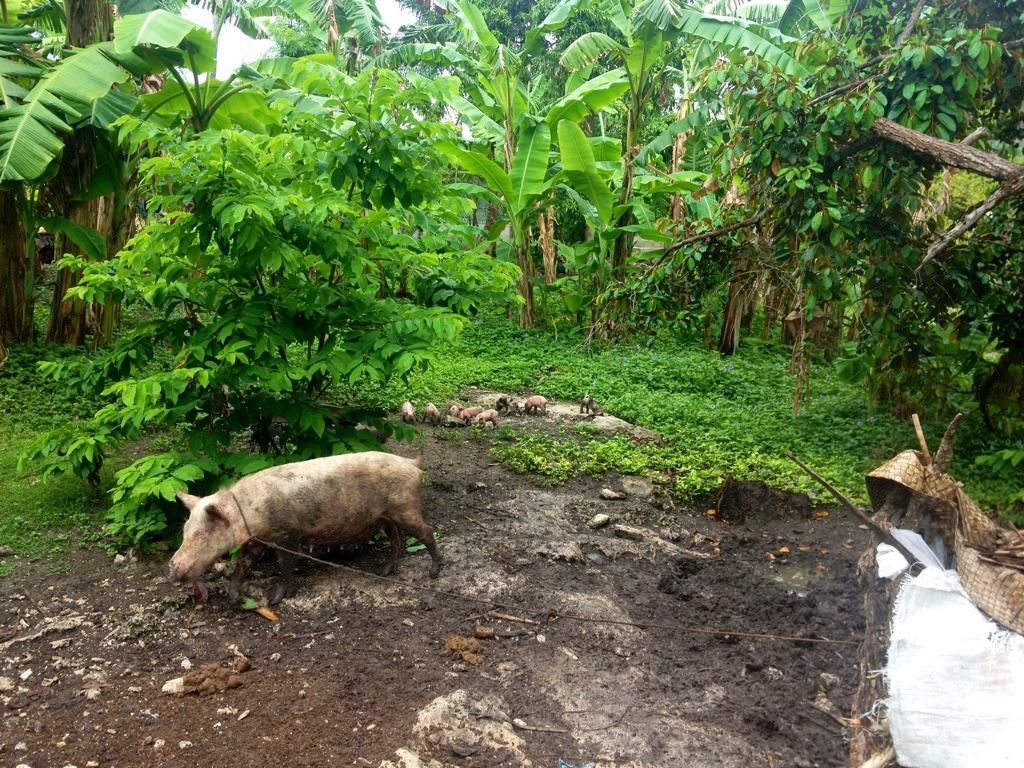
Above is a photo showing a sow tied to a tree with her piglets in the distance. There seem to be 9 or 10 piglets. The sow is tethered to prevent it from going to other people’s backyards and destroying their crops. The sow is not confined in a farrowing crate.
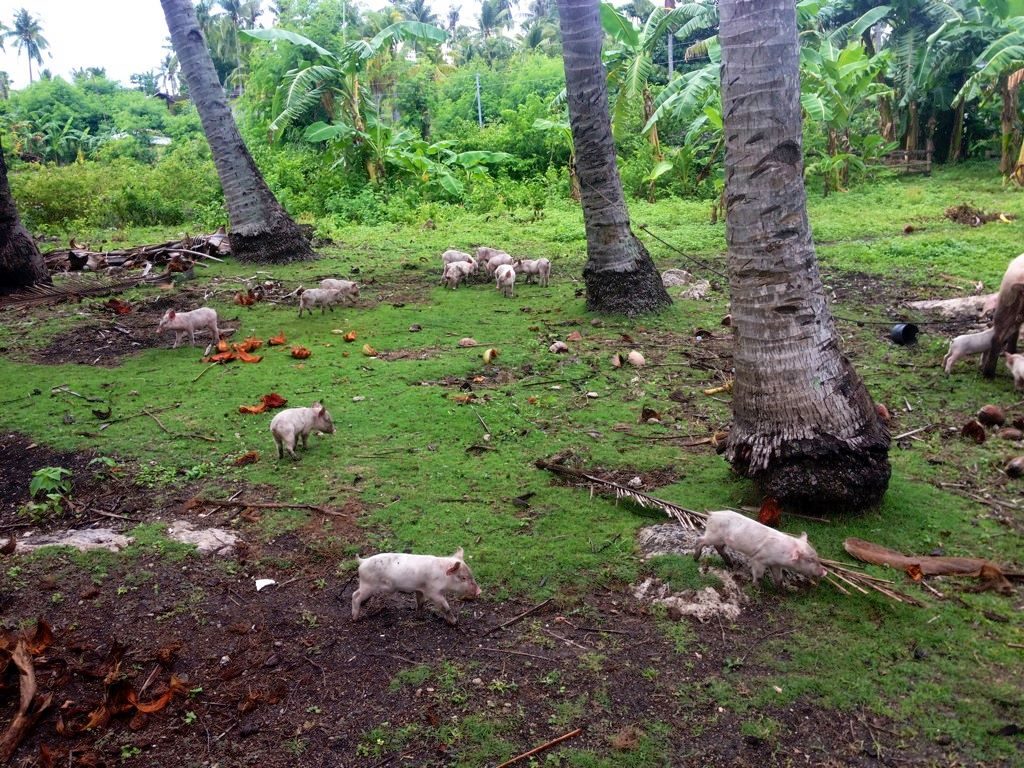
In the photo above, there are 14 piglets freely rooting around. The sow is partly visible on the right. Like in the previous photo, the sow is tethered to prevent her from going to other people’s backyards. The piglets stay closely to the sow. The piglets also don’t cause too much damage as an adult pig would.
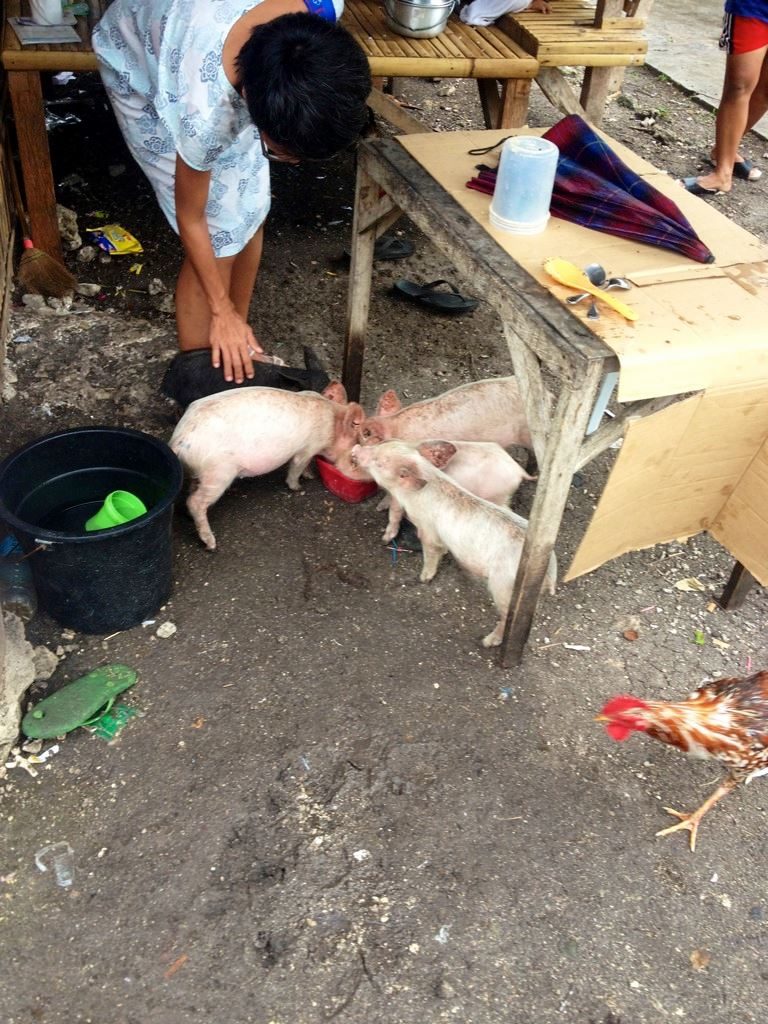
Here (above photo), I am touching a black piglet that is about 2 months of age. It is quite small. Many piglets look rather stunted, possibly because of excessive in-breeding on the island.
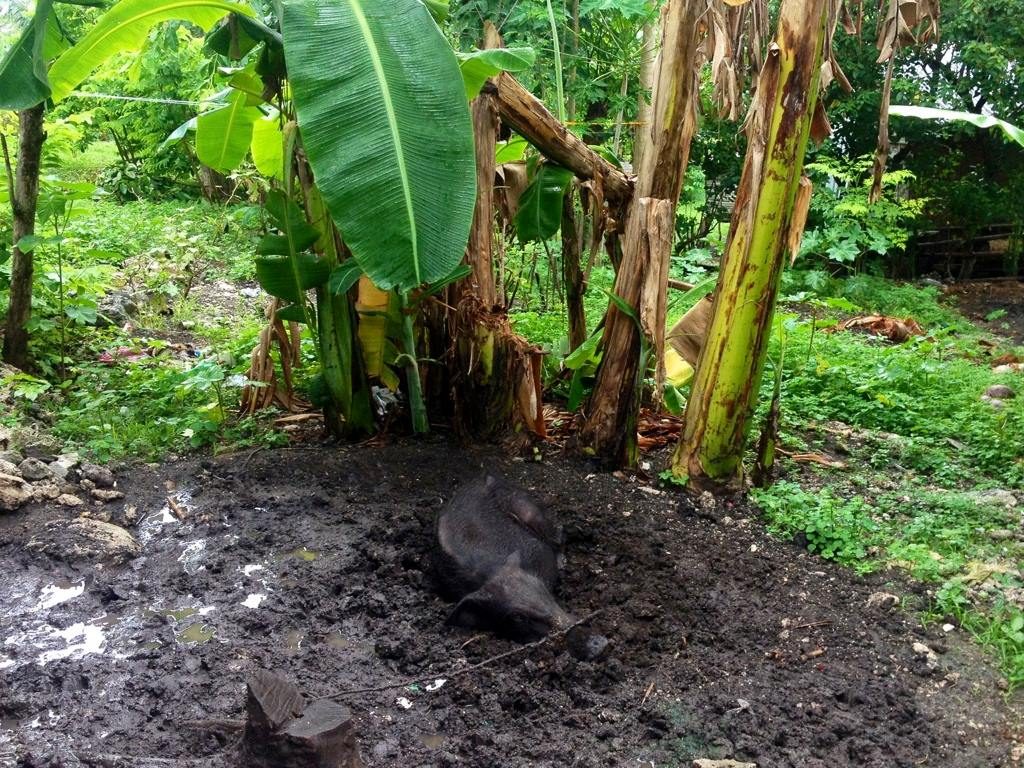
In the above photo, a pig is tied to a stump and has created a wallowing mud pit. Typically, this pig would be moved to another location as the mud pit becomes deeper.

Piglets are allowed to roam free on the island. They feed together with the native chickens.
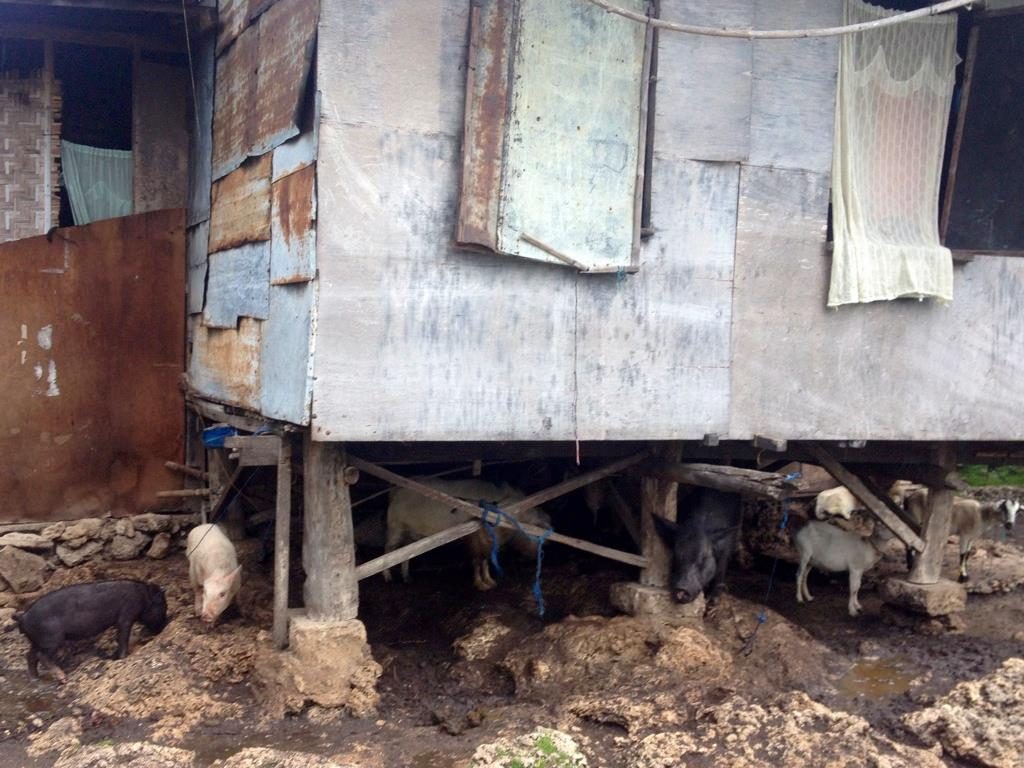
Here (above photo) are pigs and goats kept under the house. All these animals are tethered and will be brought out to pasture/forage every morning.
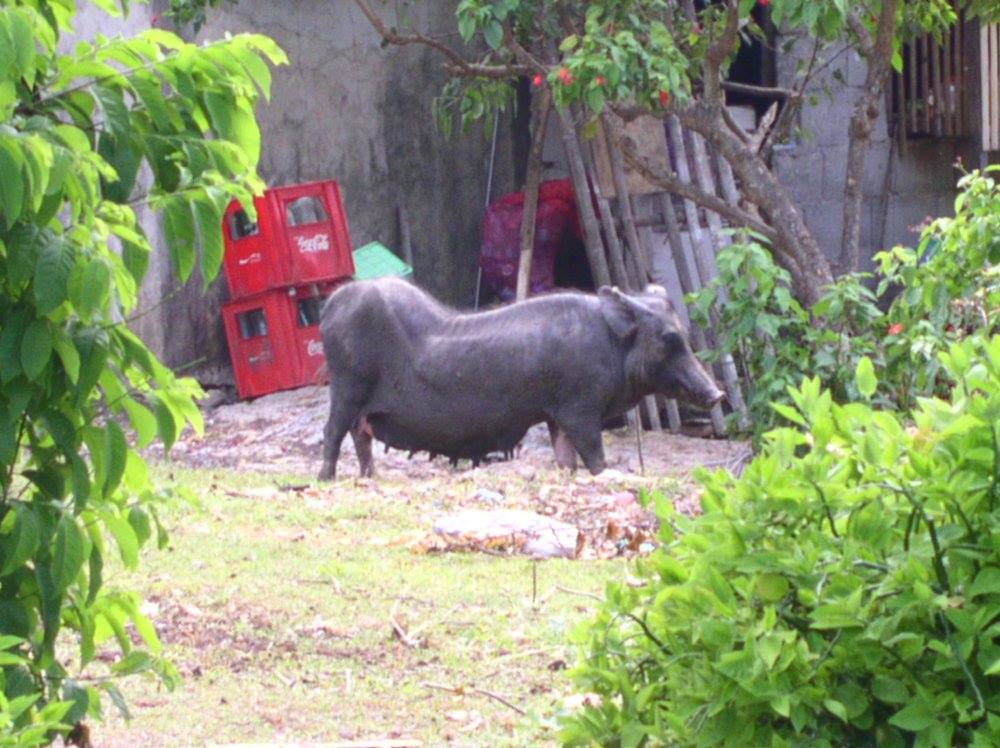
And finally, here (above photo) is what is dubbed as The Oldest Sow on Pamilacan Island. I took this photo in 2007.
Our Piglets in their New Homes
In 2016, we started selling piglets. Here are some photos of how people kept the piglets they bought from us. These are all just from around our village of San Roque.
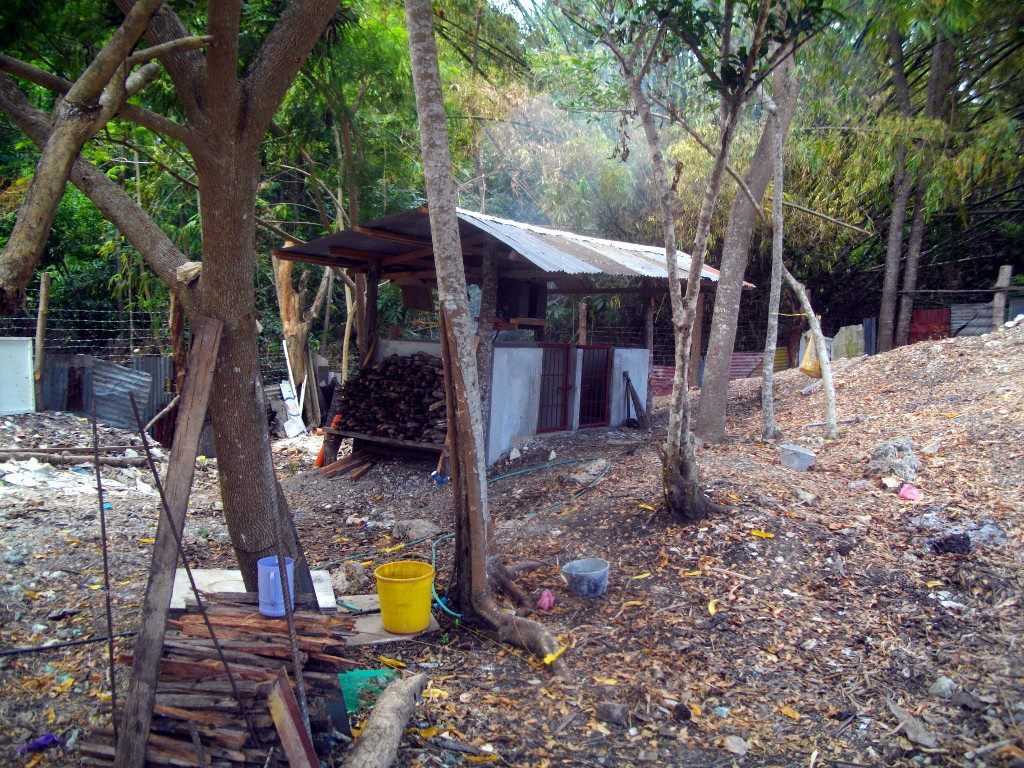
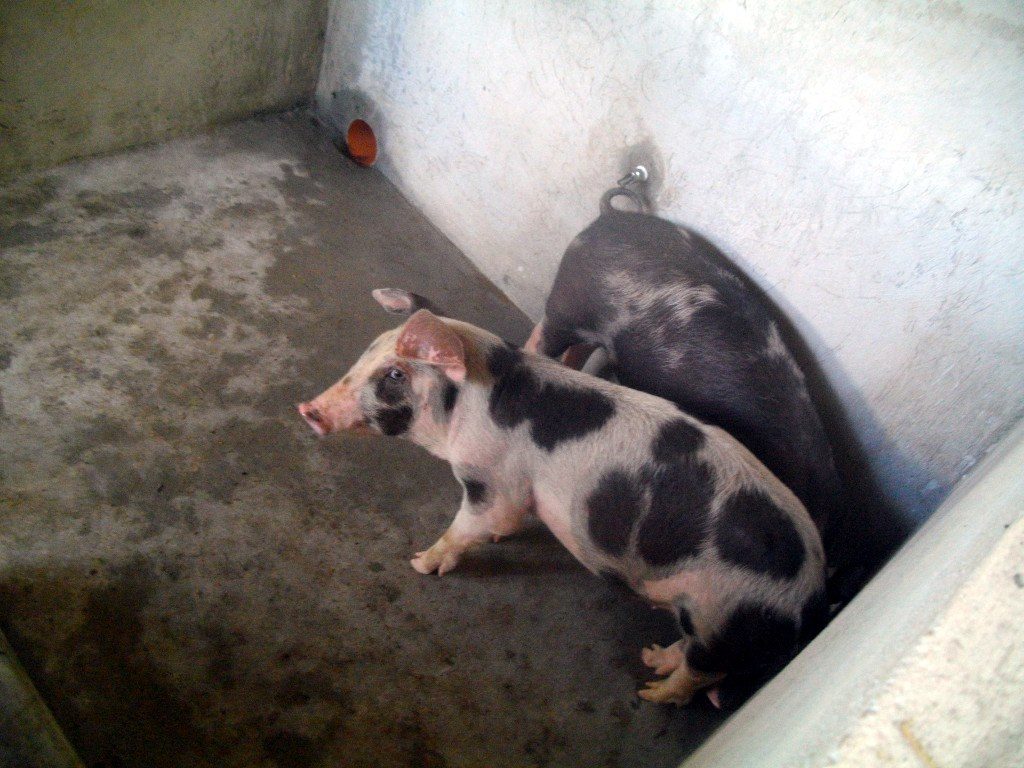
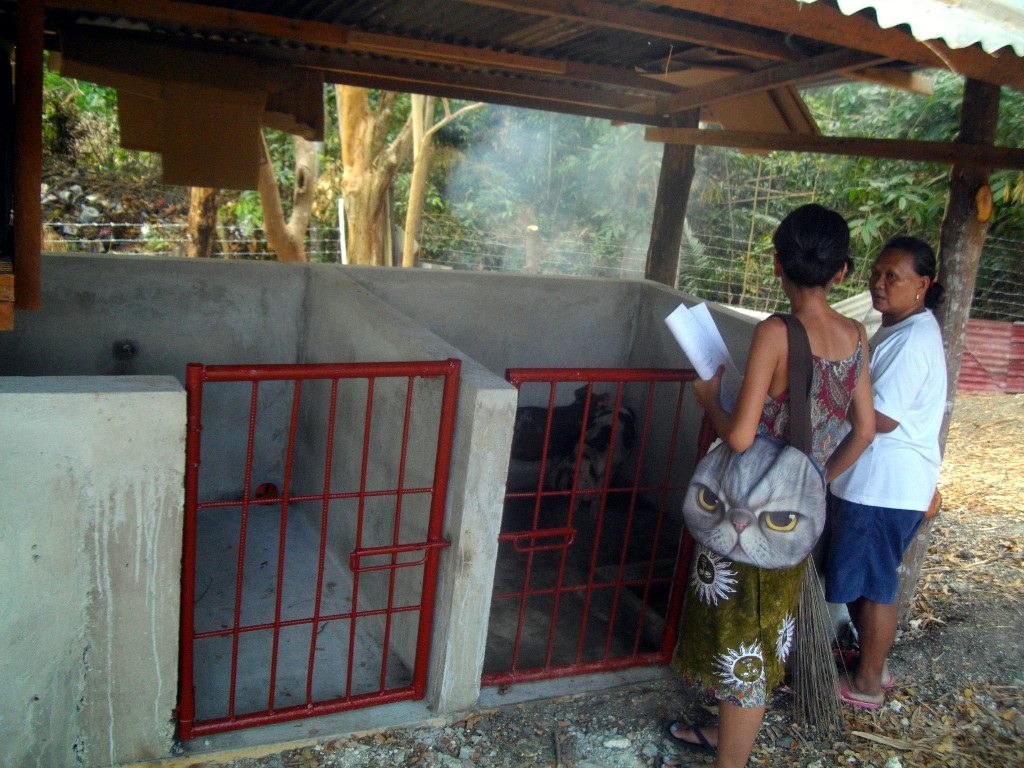
The three photos above are concrete pens with gates made of welded galvanized iron pipes and corrugated galvanized iron roof. The pens are attached to septic tanks. This design of pigpen is the most conventional in backyard settings.
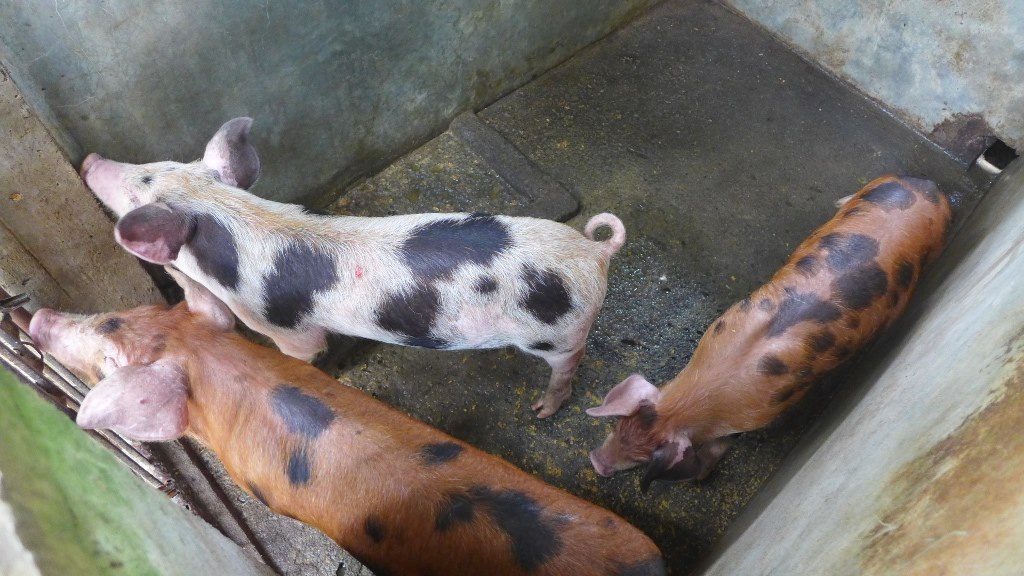
Here (above) are three of our piglets in another concrete pen built in the same way as the previous pen.
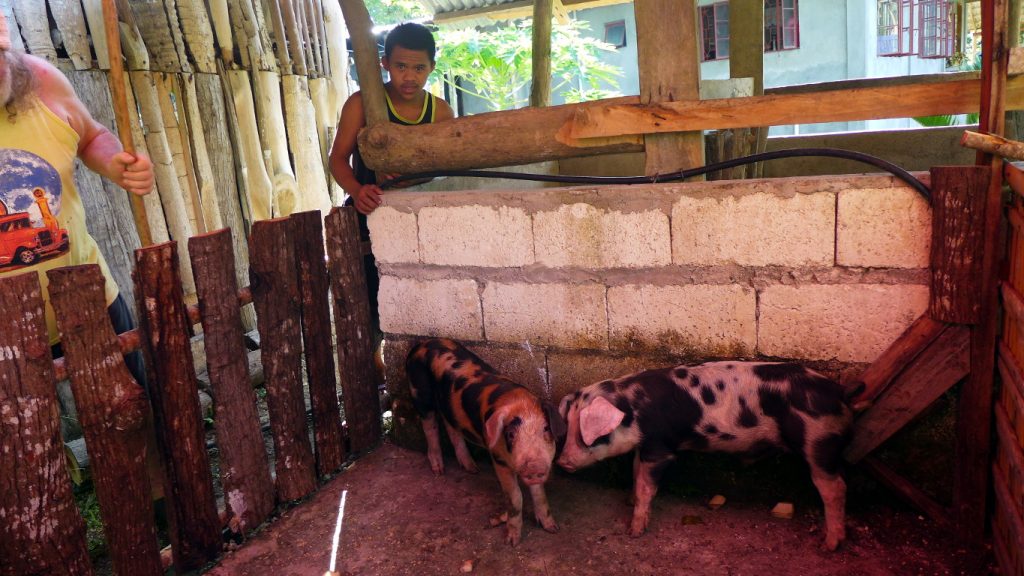
In this photo above, two of our piglets have just been transferred to their new pen at a neighbour’s who lives uphill. There is a larger separate pen where larger pigs are kept. They plan to keep one of the female piglets they got from us as a sow.
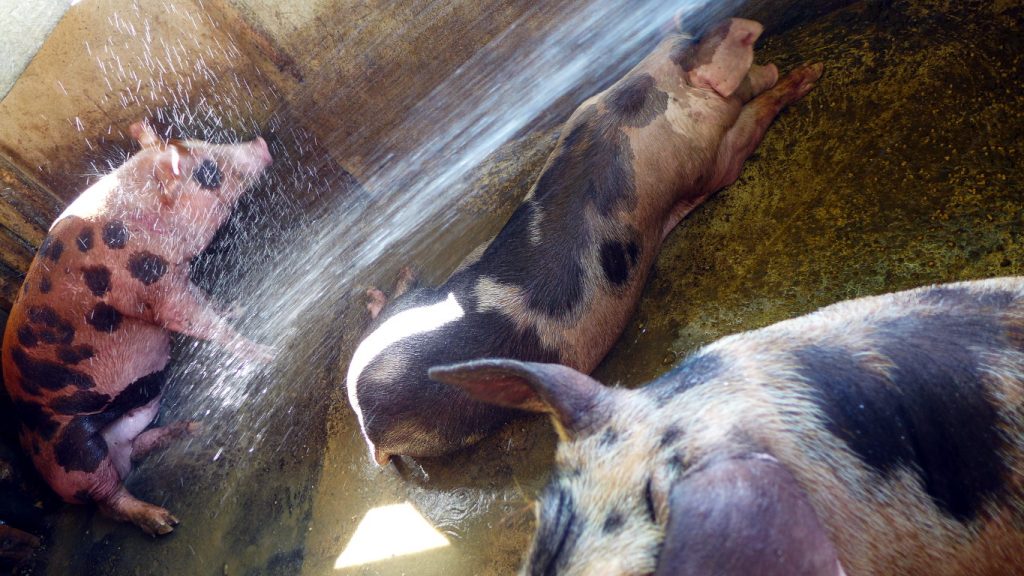
In the above photo, the piglets we sold to the same neighbours in the previous photo are now large fatteners. They are in concrete pens that are cleaned with water twice everyday. This is very typical of all conventional concrete pigpens.
Below are photos showing how people have kept our piglets in their backyard without building concrete pens. Usually in such cases, the pig may be tethered or may be placed in a pen with wooden fencing and non-concrete flooring. Building a fully concrete pen with concrete septic tank is too expensive for non-commercial, domestic pig keeping.
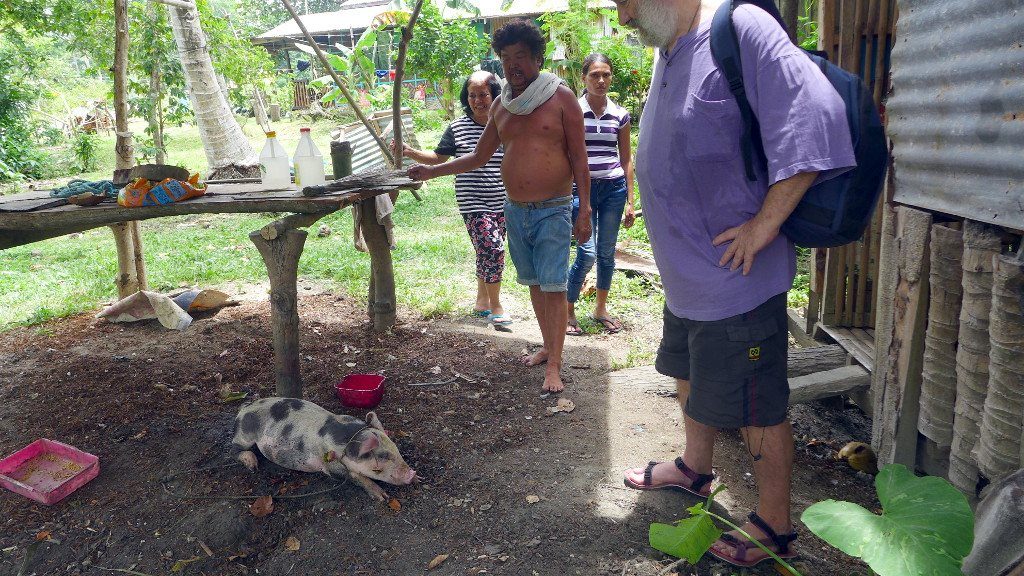
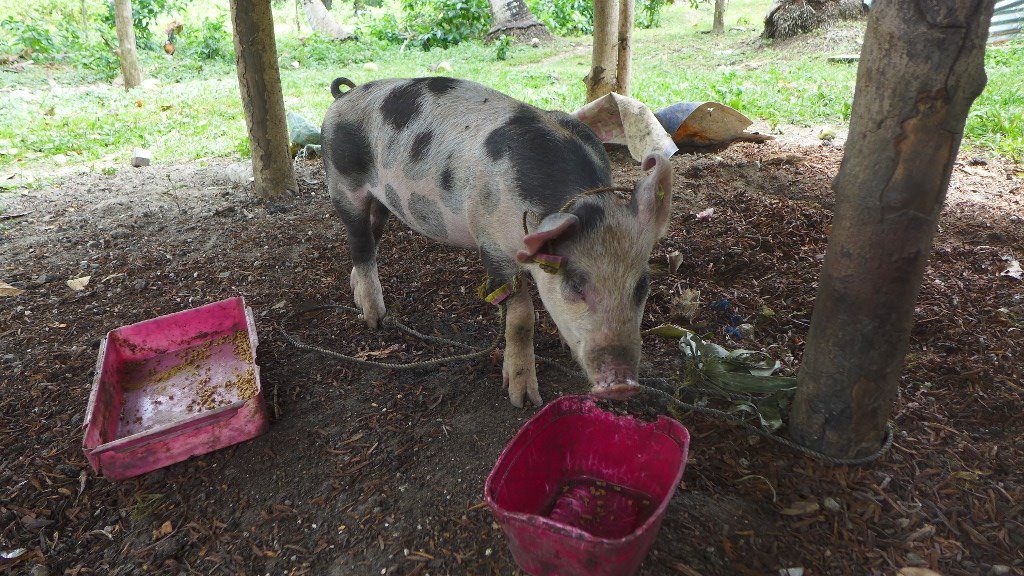
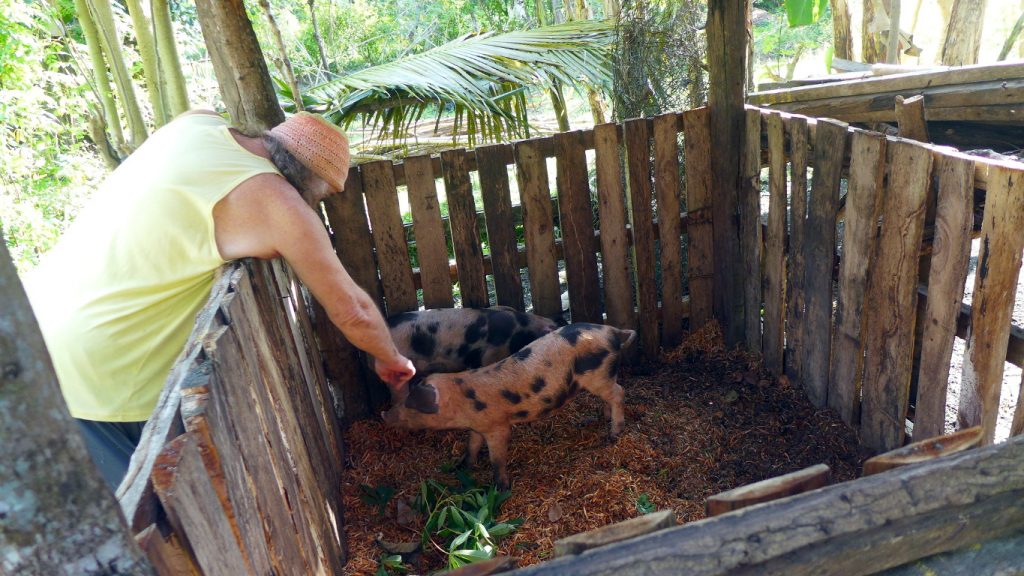
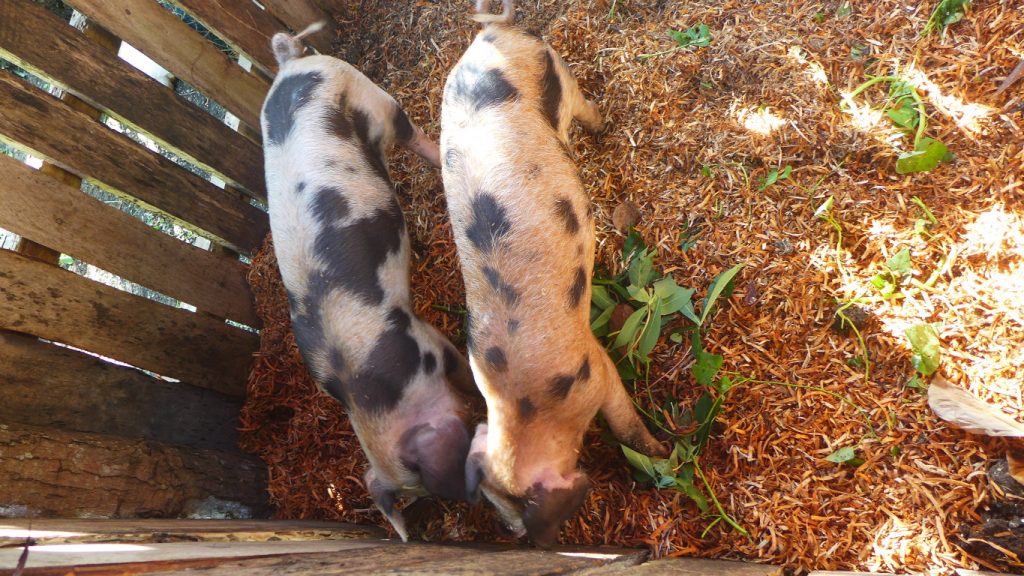
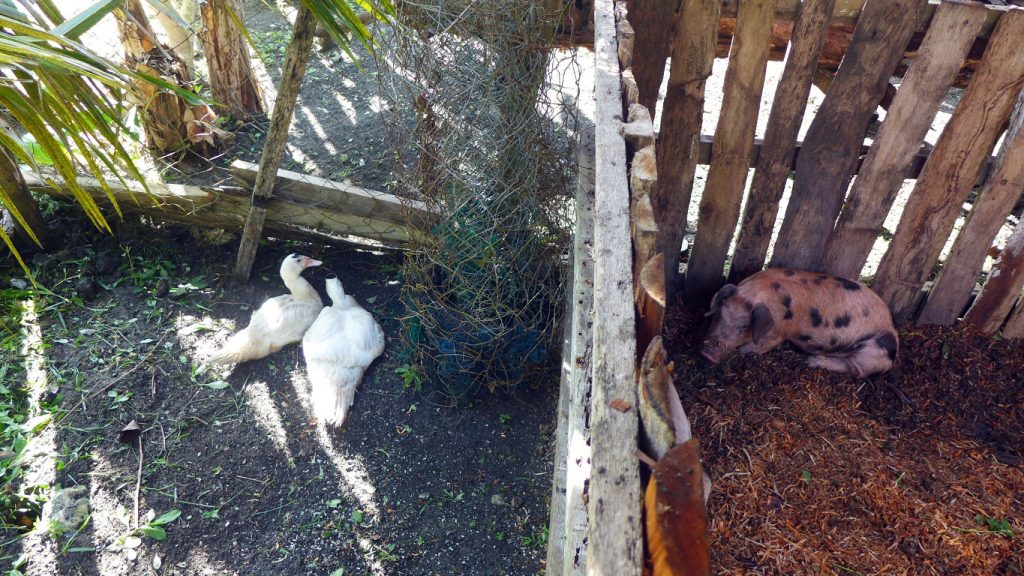
We do favour pigpens that allow the pigs to root the ground and have sufficient space to move about and play. In our experience, pigs kept this way are happier, stress free and are healthier and grow better. A lot of the people who come to buy piglets and see our pigpens are often surprised. They often say that they have not thought of such a pigpen design since they have never seen anything like ours. We hope that as awareness spreads, people will begin to consider pigpens that afford more comfort and welfare for their pigs.
More about pigpens in the links below:
https://duckduckbro.com/2017/08/a-better-pig-accommodation/
https://duckduckbro.com/2018/01/sow-and-piglets-in-an-alternative-farrowing-system/
PS. The banner photo above was taken in 2017. It is a photo of the garden with Pinky Boar, then 7 months old, luxuriating under a mahogany tree. Can you find him in the photo? 🙂 He is a brown spotty pig. 🙂
